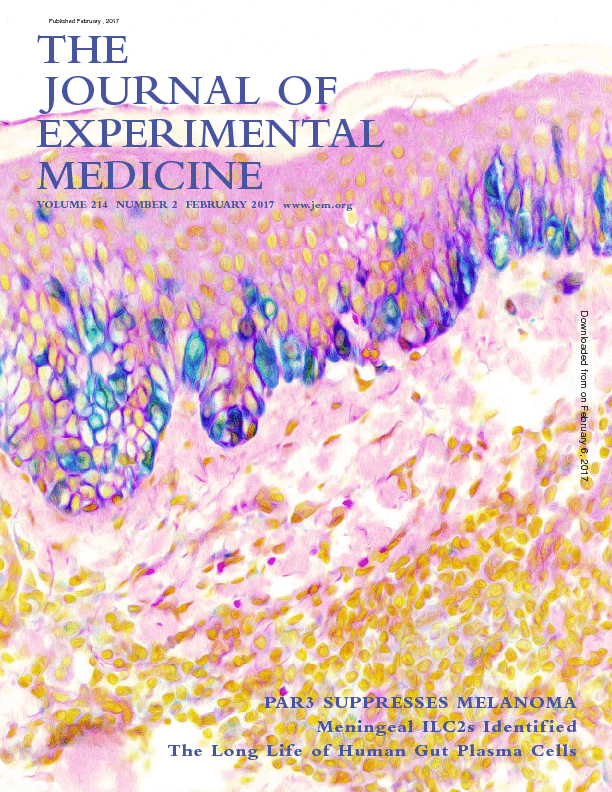Malignant melanoma
Keeping the neighbors in check: Epidermal polarity signaling in malignant melanoma
Our previous work revealed cell-intrinsic roles of polarity proteins in non-melanoma skin tumorigenesis, with both pro-oncogenic and tumor-suppressive function depending on the tumor type (Iden et al., 2012; Mescher & Iden, 2015, Vorhagen, Kleefisch et al., 2018). In this project, we investigated molecular mechanisms underlying the control of tissue architecture and malignant disease of resident neighbouring cells. Melanoma, an aggressive skin malignancy with increasing lifetime risk, originates from melanocytes (MCs) that are in close contact with surrounding epidermal keratinocytes (KCs). How the epidermal microenvironment controls melanomagenesis remains poorly understood. We identified an unexpected non-cell autonomous role of epidermal polarity proteins, molecular determinants of cytoarchitecture, in malignant melanoma (Mescher, Jeong et al., 2017). Epidermal Par3 inactivation in mice promotes MC dedifferentiation, motility, and hyperplasia and, in an HGF-Cdk4R24C-driven melanoma model, results in increased tumor formation and lung metastasis. Keratinocyte-specific Par3 loss stabilizes surface P-cadherin that is essential to promote melanocyte proliferation and phenotypic switch toward dedifferentiation. In agreement, in human melanoma patients low epidermal PAR3 and high P-cadherin expression correlate with disease progression, whereas elevated P-cadherin levels are associated with reduced survival of patients, implying that this mechanism also drives human disease. Collectively, our data show that reduced epidermal Par3 function fosters a permissive P-cadherin-dependent niche for melanocyte transformation, invasion, and metastasis. This revealed a previously unrecognized extrinsic tumor-suppressive mechanism, whereby epithelial polarity proteins dictate the cytoarchitecture and fate of other tissue-resident cells to suppress their malignant outgrowth.
Moreover, with the Ophthalmology Department at UoC we developed a syngeneic melanoma model and assessed the role of different vascular structures in the microenvironment of melanoma (Schlereth et al., 2015); and we contributed to work by the Hoth lab that dissected CTL and NK cytotoxicity against malignant melanoma (Friedmann et al., 2022)


